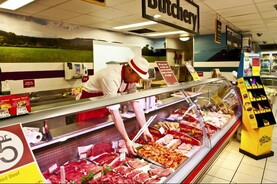Last week we wrote on these pages about the outlook for farm costs relating to the big three volatile inputs – fertiliser, feed and fuel.
We noted that other costs faced by farmers – and small businesses in the agri-food sector – are both increasingly becoming a burden and showing no signs easing.
Economists often refer to less volatile inflation data as “core” inflation. This is the stuff where prices move slowly, but also where the changes in the pace of those price moves are slower.
Basically, once the price of items that make up core inflation starts to rise faster it takes a lot longer for the pace of those price rises to slow down. Also, core inflation tends to be dominated by services, rather than goods, prices.
Looking at figure 1 we can see that service prices in Ireland increased by around 10% in the six years between 2015 and the end of 2020.
In the just over three years since then, they have climbed by more than 15%. To put that another way, the cost of services has been rising three times faster in recent years.
Inflation
It is also notable that the rate of services inflation in Ireland has been faster than the overall euro-area level in recent years.
The reason services costs have risen faster is because service providers themselves face increased costs, as shown in a recent Small Firms Association (SFA) survey of its members.
For firms with between 10 and 50 employees, 36% said that labour was the single biggest operating cost challenge they faced. This was more than the combined total who cited energy (12%) and raw material costs (13%) as their biggest challenge. Insurance costs – another service – came in fourth at 10%.
Challenging times
Overall, the survey showed that rising business costs were a challenge for two-thirds of small firms in Ireland, well ahead of concerns about competition, access to finance or the economic environment.
This data from the SFA shows that the cost of doing business continues to increase, which implies that the prices businesses will have to charge may continue to increase.
To put it more plainly, the cost of doing business is increasing because the cost of doing business is increasing.






 This is a subscriber-only article
This is a subscriber-only article










SHARING OPTIONS: